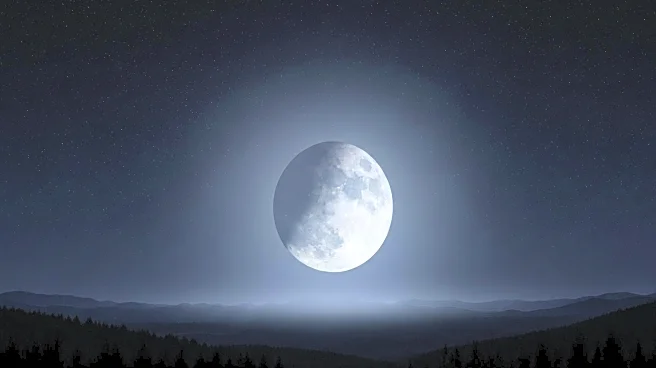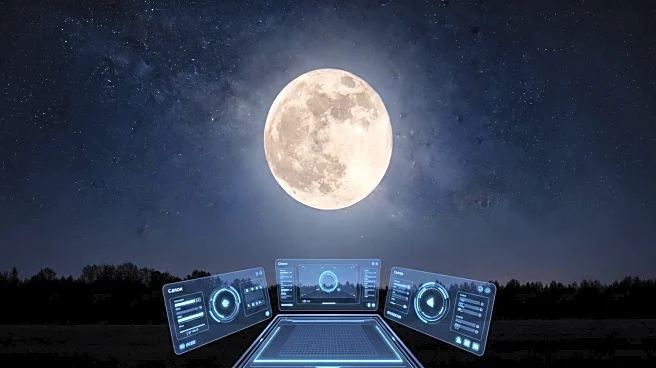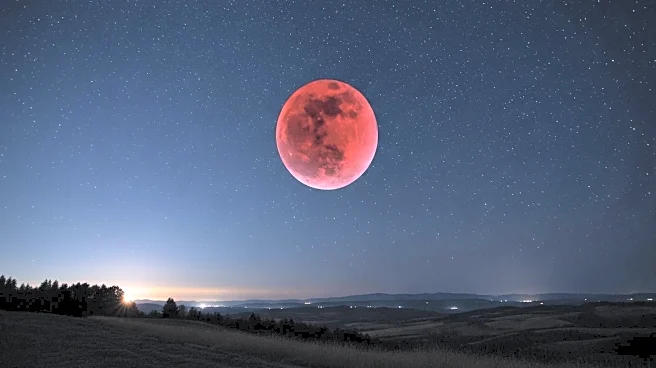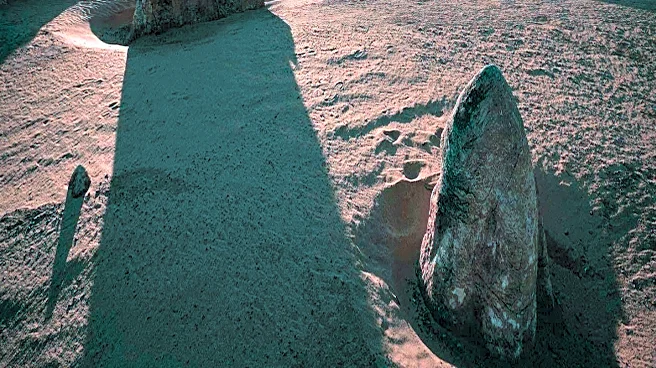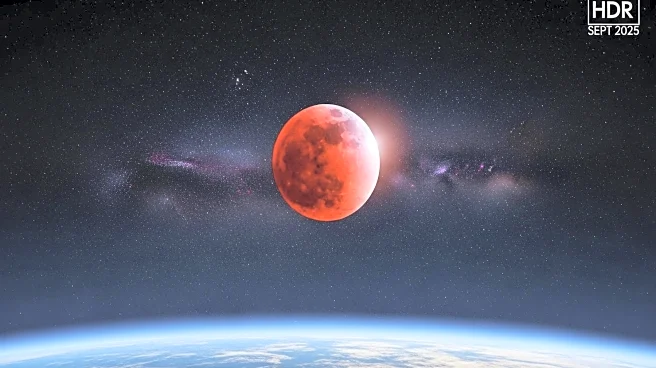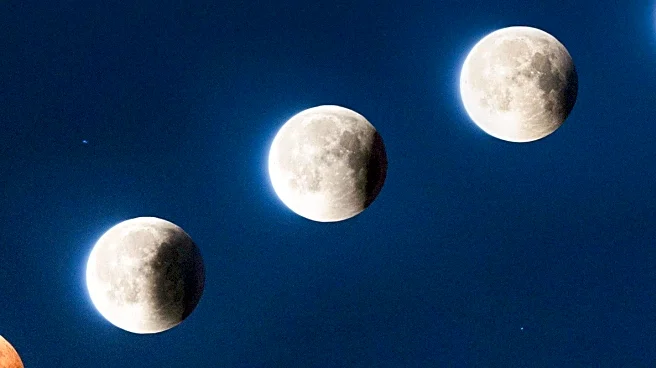What's Happening?
The corn moon, the final full moon of summer 2025, will reach peak illumination on September 7 at 2:09 p.m. EDT. This moon is named for the Algonquin tribes' tradition of harvesting corn and other staple crops during this time. While the corn moon will be visible in the U.S., a total lunar eclipse, known as a 'blood moon,' will occur simultaneously but will not be visible from the Americas. The eclipse will be observable in parts of Europe, Asia, Africa, Australia, and New Zealand.
Why It's Important?
The corn moon is culturally significant, marking the end of summer and the beginning of harvest season. It serves as a reminder of the agricultural heritage and practices of Native American tribes. The simultaneous occurrence of a lunar eclipse highlights the global nature of astronomical events, offering opportunities for international collaboration and observation. While Americans will miss the eclipse, it underscores the importance of planning for future celestial events.
What's Next?
The next total lunar eclipse visible in the U.S. will occur on March 3, 2026. Meanwhile, the corn moon will be visible both nights before and after September 7, providing ample opportunity for observation. Stargazers can anticipate clear skies for viewing, according to the National Weather Service. The next full moon, known as the harvest moon, will rise on October 6, 2025.


